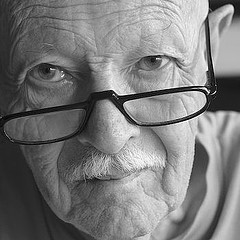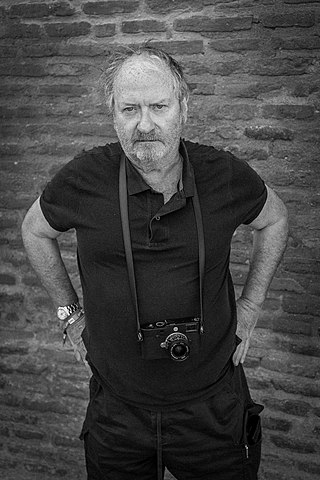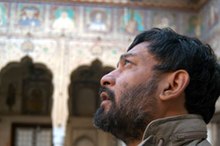
Henri Cartier-Bresson was a French artist and humanist photographer considered a master of candid photography, and an early user of 35mm film. He pioneered the genre of street photography, and viewed photography as capturing a decisive moment.

Lucien Hervé was a Hungarian photographer. He was notable for his architectural photography, beginning with his work for Le Corbusier.

Raghu Rai is an Indian photographer and photojournalist. He was a protégé of Henri Cartier-Bresson, who nominated Rai, then a young photojournalist, to join Magnum Photos in 1977.

Willy Ronis was a French photographer. His best-known work shows life in post-war Paris and Provence.
John Stathatos, Greek photographer and writer.

Paul Graham is a British fine-art and documentary photographer. He has published three survey monographs, along with 17 other publications.

Dayanita Singh is an Indian photographer whose primary format is the book. She has published fourteen books.

Nadav Kander HonFRPS is a London-based photographer, artist and director, known for his portraiture and landscapes. Kander has produced a number of books and had his work exhibited widely. He received an Honorary Fellowship from the Royal Photographic Society in 2015, and won the Prix Pictet award.
Claudine Doury is a French photographer living in Paris. She has been a member of Agence Vu since 1991. In 1999, she received the Leica Oskar Barnack award as well as a World Press Photo award for her work on the "Peoples of Siberia", and the Niépce Prize in 2004. Her Siberian work has been shown in a solo exhibition at the Académie des Beaux-Arts in Paris.

Manuel Rivera-Ortiz is a stateside Puerto Rican photographer. He is best known for his social documentary photography of people's living conditions in less developed nations. Rivera-Ortiz lives in Rochester, New York and in Zurich.
Davide Monteleone is an Italian photographer. He won World Press Photo awards in 2007, 2009, and 2011. Since 2019 Monteleone is a National Geographic Storytelling Fellow.

The Manuel Rivera-Ortiz Foundation for Documentary Photography & Film is a non-profit private operating foundation headquartered in Rochester, New York. The foundation was established in 2010 by documentary photographer Manuel Rivera-Ortiz to support underrepresented photographers and filmmakers from less developed countries with grants, awards, exhibitions, and educational programs.
Simon Norfolk is a Nigerian-born British architectural and landscape photographer. He has produced four photo book monographs of his work. His photographs are held in over a dozen public museum collections.
Frédéric Brenner is a French photographer known for his documentation of Jewish communities around the world. His work has been exhibited internationally, among others, at the International Center of Photography in New York, the Musée de l'Élysée in Lausanne, Rencontres d'Arles in Arles, the Brooklyn Museum in New York, and the Joods Historisch Museum in Amsterdam.
Soumya Sankar Bose is an Indian documentary photographer. In his practice he uses photography, archival material and text to explore desire, identity and memory. His first book 'Where the Birds Never Sing(2020)' is on Marichjhapi massacre, the forcible eviction in 1979 of lower caste Bengali refugees on Marichjhapi Island in Sundarban, India, and the subsequent death of thousands by police gunfire, starvation, and disease. The Book was shortlisted for the First Photobook award in the Paris Photo–Aperture Foundation PhotoBook Awards 2020.
Waman Thakre is an Indian photographer and a former deputy director at the Directorate of Panchayat and Social Service of the Government of Madhya Pradesh. He is a Fellow of the Royal Photographic Society and the Photographic Society of America and is a recipient of the Shikhar Award of the MP State government. The Government of India awarded him the fourth highest civilian honour of the Padma Shri, in 2007, for his contributions to Arts.
Zhang Kechun born in 1980 in Sichuan province is a Chinese artist and photographer. He is known for his photographs dwelling on the significance of the landscape in modern Chinese national identity. He currently lives and works in Chengdu, China.
Gilles Mora is a French photography historian and critic specialising in 20th century American photography, and photographer. He has edited books on Walker Evans, Edward Weston, W. Eugene Smith, Aaron Siskind and William Gedney, as well as published a book of his own photographs, Antebellum. Mora won the Prix Nadar in 2007 for the book La Photographie Américaine: 1958–1981: the Last Photographic Heroes.
Léon Herschtritt was a French humanist photographer. He won the Niépce Prize as a young photographer in 1960.

Yan Morvan is a French photographer, journalist, photojournalist and author particularly recognized for his war photography and images of underground communities.










